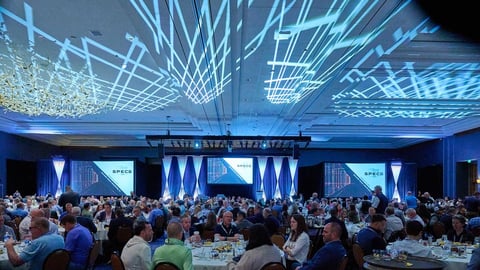Taking retail tech inspiration from Rock & Roll Hall of Fame nominees
Retailers can follow the examples of some of this year’s nominees to the Rock & Roll Hall of Fame to maximize the value of their technology efforts.
While retailers often speak of the need to hire "rock stars" to drive success in their organization, they can also look to real-life rock stars for guidance on technology innovation.
Here’s a look at how three 2025 Rock & Roll Hall of Fame nominees – The Black Crowes, Cyndi Lauper and Phish – set examples that retailers as well as musicians can follow.
Black Crowes – What’s old is new
When Southern rockers The Black Crowes burst onto the scene with a cover of fellow Georgia native Otis Redding’s R&B hit “Hard to Handle” in 1990, “rock and roll” in its traditional definition was something performed by comeback classic rock bands like Aerosmith and The Rolling Stones.
Younger bands like The Black Crowes primarily played an ear-friendly version of heavy metal or slick, keyboard-heavy commercially oriented songs. The Crowes instead offered a more 1970s-style version of rock music featuring bluesy guitar and organ riffs, wailing vocals and lots of shaggy long hair and bell bottoms.
However, their music still featured contemporary production values, and they also leaned into music videos. This retro approach with a modern twist proved refreshing in what had become a homogenized music landscape, leading to impressive album and concert sales for most of the decade.
The rebirth of the brick-and-mortar store as a place for connected consumers to gather and shop as they always have, while still enjoying many of the benefits of digital commerce, follows the example of The Black Crowes.
For instance, outdoor apparel and gear retailer The North Face revamped its London flagship to go beyond traditional shopping in partnership with in-store experiential media provider Mood Media.
The store features an integrated space that combines realistic virtual simulations of nature with the physical shopping environment. The hub of the store has a campfire setting as a community area, under an immersive 3D experience tent where projections of mountain summits change between night and day featuring different weather conditions.
To help consumer navigation, the store is divided into zoning areas with wide lightboxes from athletes' expeditions feature active 3D-printed mannequins. The whole space is highly phygital, with wide screens at the entrance for brand and product storytelling.
[READ MORE: EXCLUSIVE: The North Face deploys immersive tech in London flagship]
Cyndi Lauper – Video propelled the radio star
Cyndi Lauper burst onto the scene in 1983 with an image and sound tailor-made for the burgeoning MTV music video network (yes, they focused on videos way back when). With her wild, colorful post-punk wardrobe and haircut and catchy bubblegum pop songs – sung in an impressive four-octave vocal range – Lauper was natural fit for the music video format.
Her inventive, funny videos helped propel Lauper to stardom with multiple hit singles. She also included pop culture celebrities of the era, such as pro wrestling star “Captain” Lou Albano, in her videos to increase their audience reach.
Video is now a burgeoning commerce platform, with numerous retailers partnering and/or competing with the TikTop Shop mobile video commerce feature. And shoppable videos featuring celebrities are a popular offering, with examples such as Walmart’s Cyber Monday live shopping event featuring Dolly Parton and Amazon’s livestream partnership with Martha Stewart.
Phish - Community organizers
Vermont-based jam band Phish started life in the early 1980s playing its distinctive freeform blend of blues, jazz, psychedelia, country, roots and most every other conceivable genre of music in three-hour concerts for audiences comprised mostly of college kids around the Northeast.
Never achieving large album sales or radio airplay, Phish followed in the footsteps of jam band pioneers The Grateful Dead by slowly building a following of loyal fans who would attend every concert on a tour and trade bootleg tapes (Gen Z can ask their parents about cassette tapes) that Phish allowed and even encouraged them to record.
By turning its concerts into an interactive experience fans could promote via their bootleg tapes, Phish gradually became one of America’s top-performing live acts and influenced a generation of similarly-minded jam band performers.
Today, retailers have the opportunity to leverage social media to turn their customers into brand influencers. Instead of promoting homemade concert recordings, customers can promote your products to their friends on their own accounts.
This more deeply engages them in your brand while also generating valuable word-of-mouth advertising. Dick’s Sporting Goods recently began broadening the scope of its influencer initiative by opening it to customers and the general public.
The retailer is expanding its previously internal influencer program, the “Dick’s Varsity Team." If chosen, Dick’s Varsity Team members will work closely with the retailer and its partner brands to create original social media content and share it across their platforms.
While Dick’s is launching a formal program that pays participating customers, many retailers also encourage customers to promote them on social media for free or for the chance to earn prizes such as gift cards.







